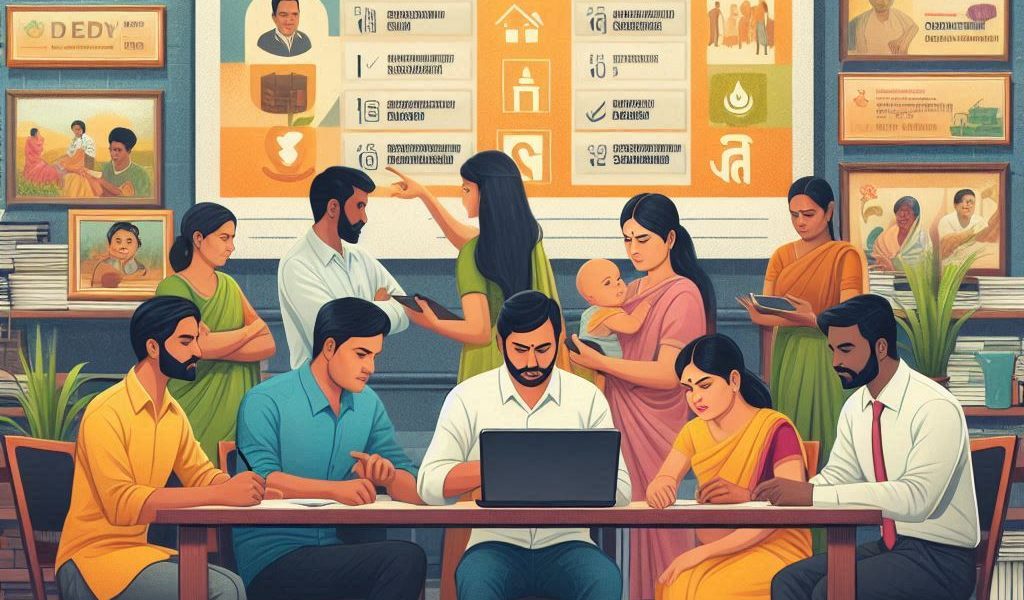Government subsidies play a crucial role in supporting individuals, businesses, farmers, and various sectors of the economy. In India, numerous subsidy programs are available across industries, including agriculture, education, healthcare, housing, and entrepreneurship. However, knowing whether you qualify for a particular subsidy is essential before applying. This article will guide you on how to check eligibility for government subsidies in India effectively.
Understanding Government Subsidies in India
Government subsidies are financial aids provided by the central and state governments to promote economic growth, reduce financial burdens, and support specific sectors. These can be direct cash transfers, tax rebates, reduced loan interest rates, or other financial assistance programs.
Some key categories of subsidies in India include:
- Agricultural Subsidies – Support for farmers, seeds, fertilizers, irrigation, etc.
- Education Subsidies – Scholarships, fee waivers, and financial aid for students.
- Healthcare Subsidies – Government health schemes and medical assistance.
- Housing Subsidies – Financial support for first-time home buyers and affordable housing.
- Business & MSME Subsidies – Grants and incentives for startups and small businesses.
- Renewable Energy Subsidies – Incentives for solar panels, wind energy, and green initiatives.
Steps to Check Your Eligibility for Government Subsidies
1. Identify the Relevant Subsidy Scheme
Before checking eligibility, determine which subsidy program applies to your needs. You can do this by:
- Visiting official government websites such as MyGov.in, NSP (National Scholarship Portal), and Startup India.
- Searching for sector-specific schemes such as PM Kisan Samman Nidhi, PM Awas Yojana, Mudra Loan, and Ujjwala Yojana.
- Consulting local government offices or helplines for details.
2. Check Official Government Portals
The government of India has various online portals where applicants can verify eligibility for subsidies. Some key portals include:
- National Portal of India – A centralized website for all government schemes.
- Direct Benefit Transfer (DBT) Portal – For checking direct cash transfer schemes.
- [State Government Websites] – Each state offers different subsidy programs that can be found on respective state portals.
- [SEBI & RBI Websites] – For business and financial subsidy programs.
3. Read the Eligibility Criteria Carefully
Each subsidy scheme has specific eligibility criteria. Generally, the key parameters include:
- Income Criteria – Many subsidies are available only to individuals or businesses under a certain income threshold.
- Category or Sector – Some schemes are meant for particular groups, such as farmers, women entrepreneurs, or students from disadvantaged backgrounds.
- Age & Residential Status – Some programs are available only to Indian citizens or specific age groups.
- Employment Status – Some schemes apply only to unemployed individuals, startups, or MSMEs.
- Other Documentation Requirements – Many programs require proof of land ownership, business registration, caste certificates, or Aadhar-linked bank accounts.
4. Use Subsidy Eligibility Calculators
Several government websites offer eligibility calculators where you can input details and check whether you qualify for a scheme. Some useful tools include:
- PMAY (Pradhan Mantri Awas Yojana) Eligibility Calculator – Available on PMAY official website.
- Mudra Loan Eligibility Check – Provided by leading banks and financial institutions.
- Solar Subsidy Calculator – Available on MNRE website.
5. Check Required Documentation
Before applying, ensure you have all necessary documents, such as:
- Aadhar Card
- Income Certificate
- Bank Account Details
- PAN Card
- Business Registration Certificate (for MSME schemes)
- Caste Certificate (if applicable)
- Land Ownership Records (for agricultural subsidies)
6. Contact Local Government Offices or Helplines
If you are unsure about eligibility, you can:
- Visit Common Service Centers (CSC) for assistance.
- Call toll-free government helplines.
- Contact local municipal corporations or district offices.
Common Mistakes to Avoid When Checking Subsidy Eligibility
- Not Reading the Fine Print – Always check detailed terms and conditions before applying.
- Falling for Scams – Only apply through official government websites and avoid third-party agents demanding fees.
- Submitting Incomplete Applications – Ensure all documents are uploaded correctly to avoid rejection.
- Ignoring State-Specific Programs – Some subsidies are offered by state governments, which people often overlook.
Conclusion
Government subsidies in India provide financial relief and promote development across various sectors. Checking your eligibility is the first step to availing these benefits. By using official portals, understanding criteria, and gathering the right documents, you can ensure a smooth application process. Always stay informed about new schemes and updates to maximize your benefits.




